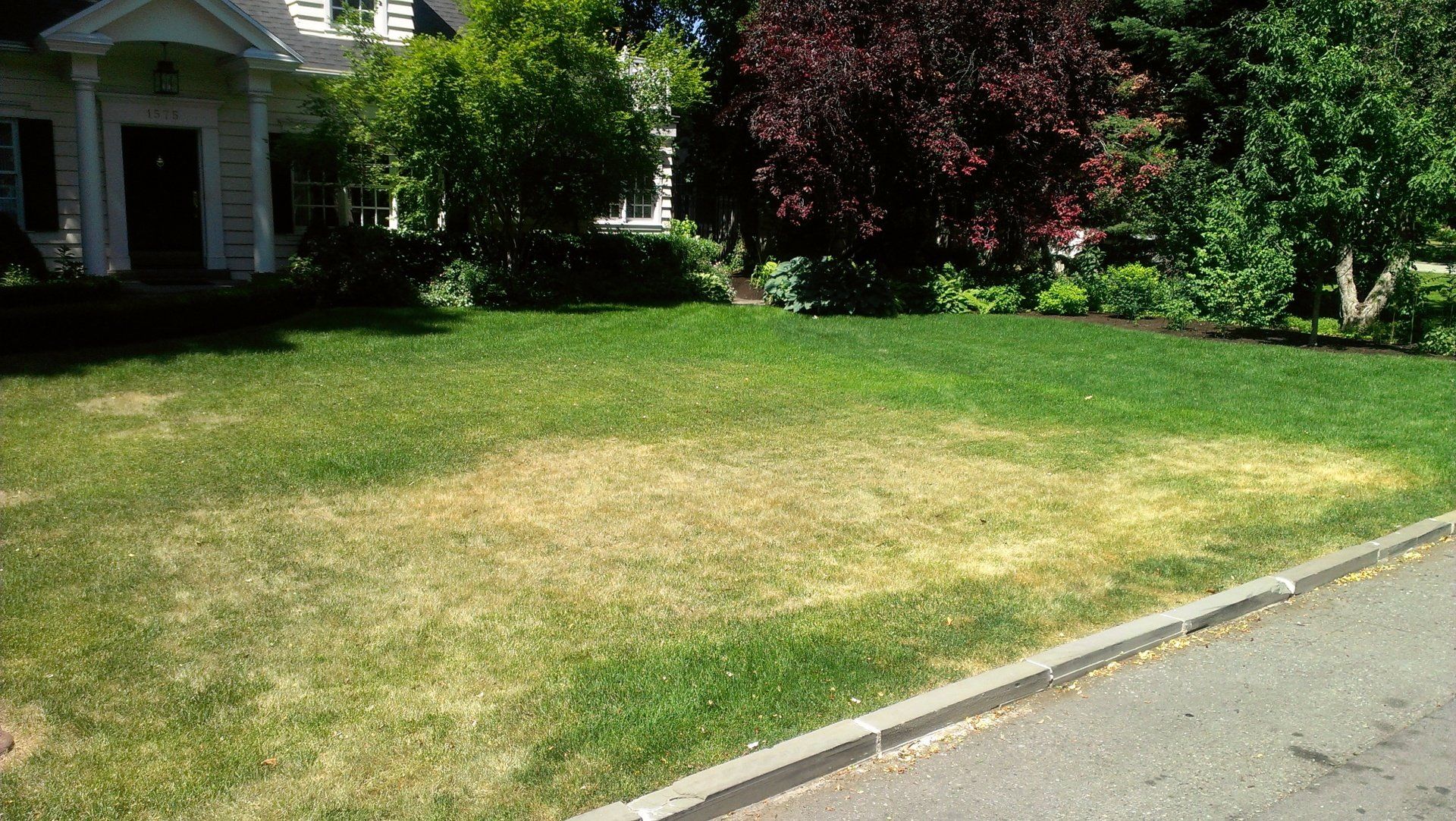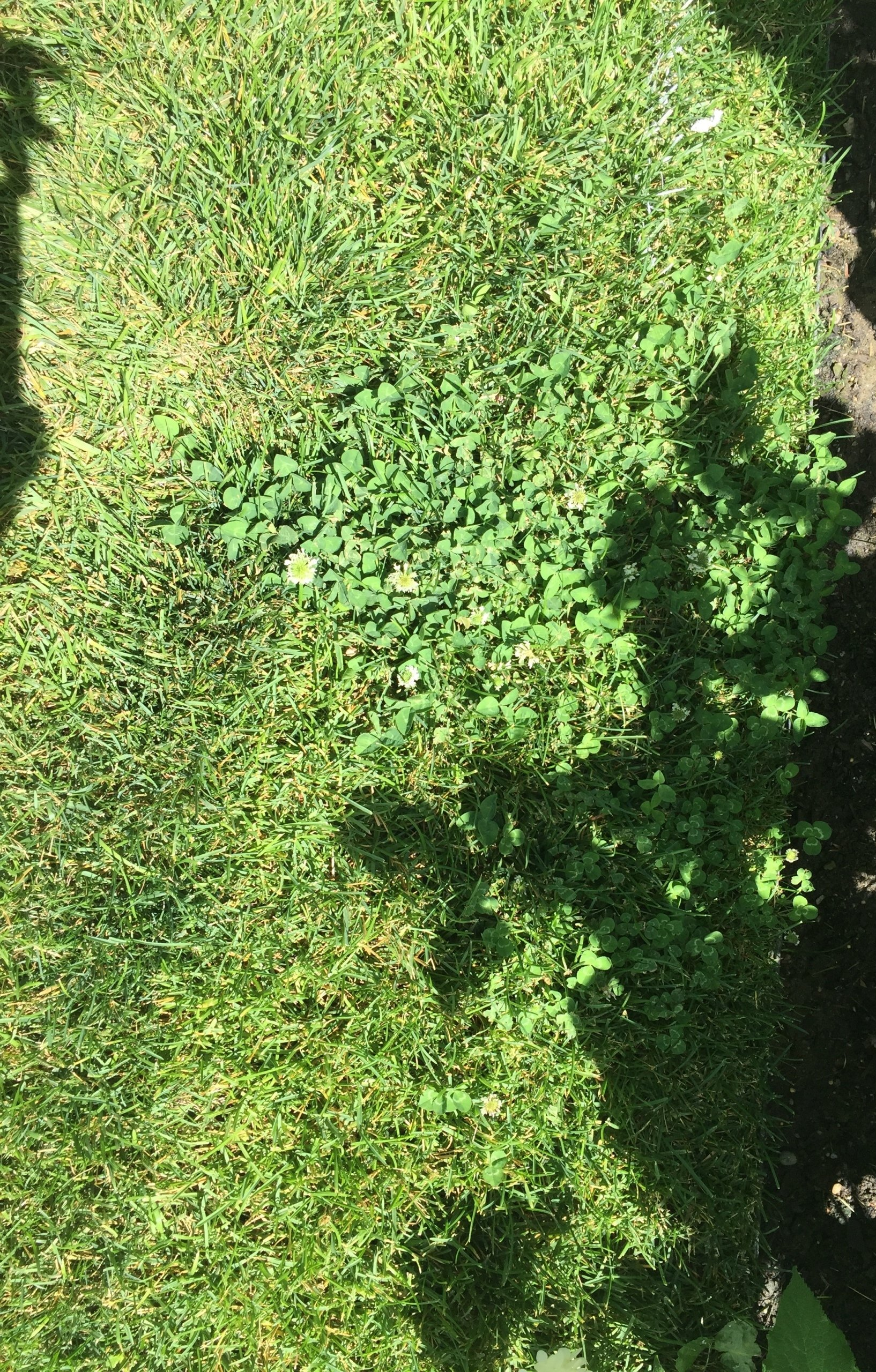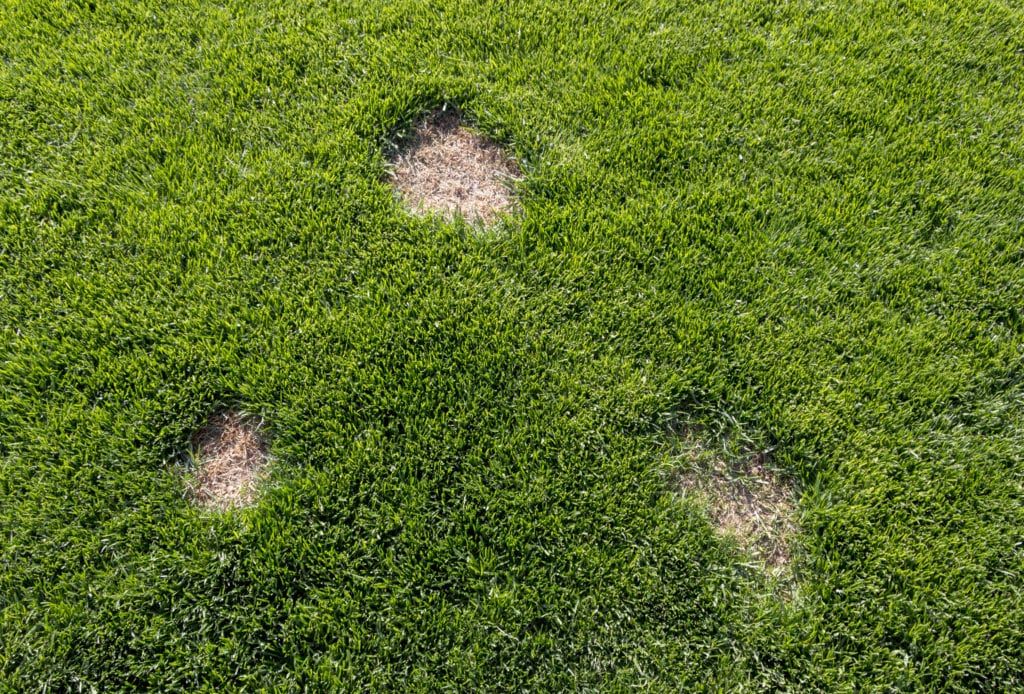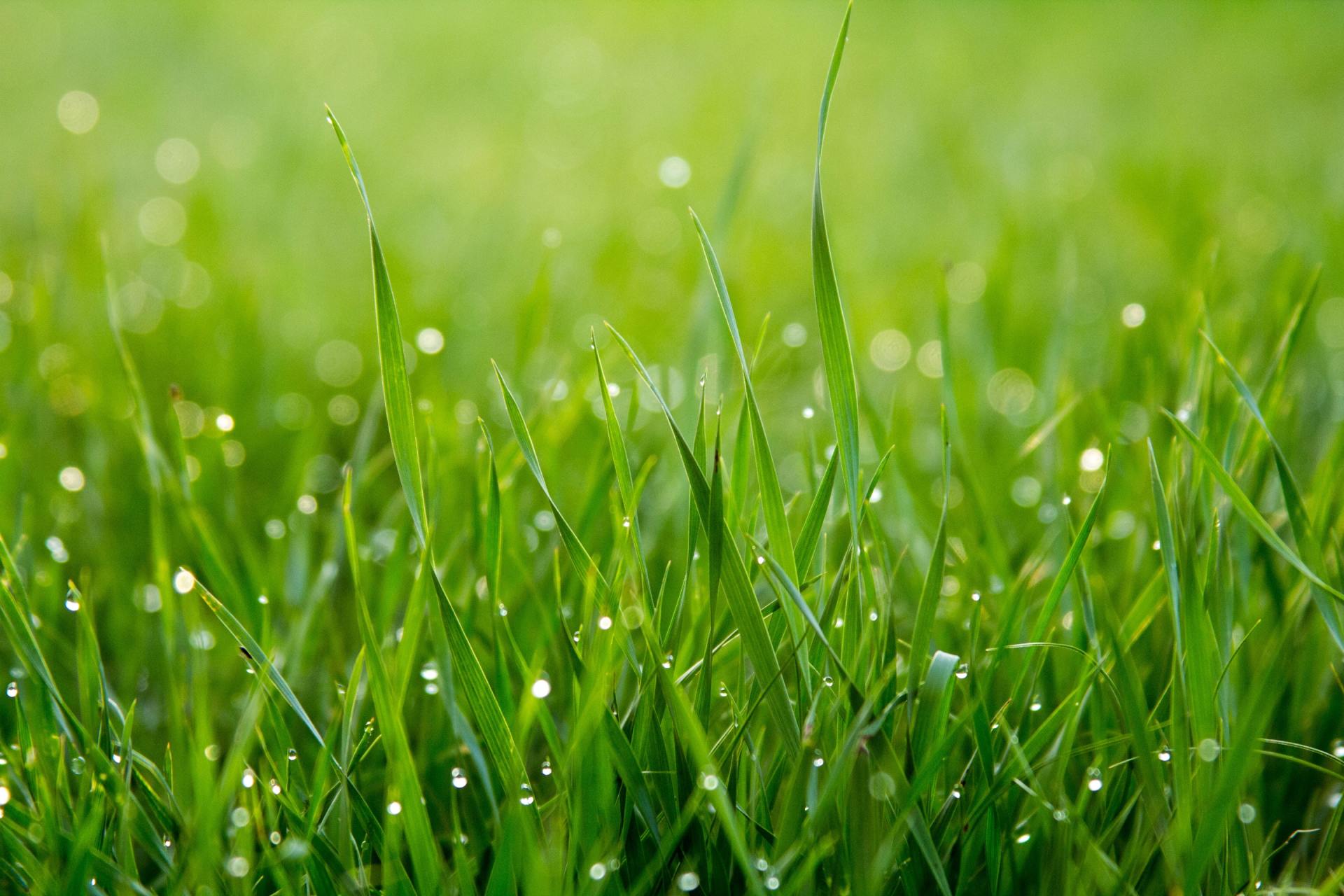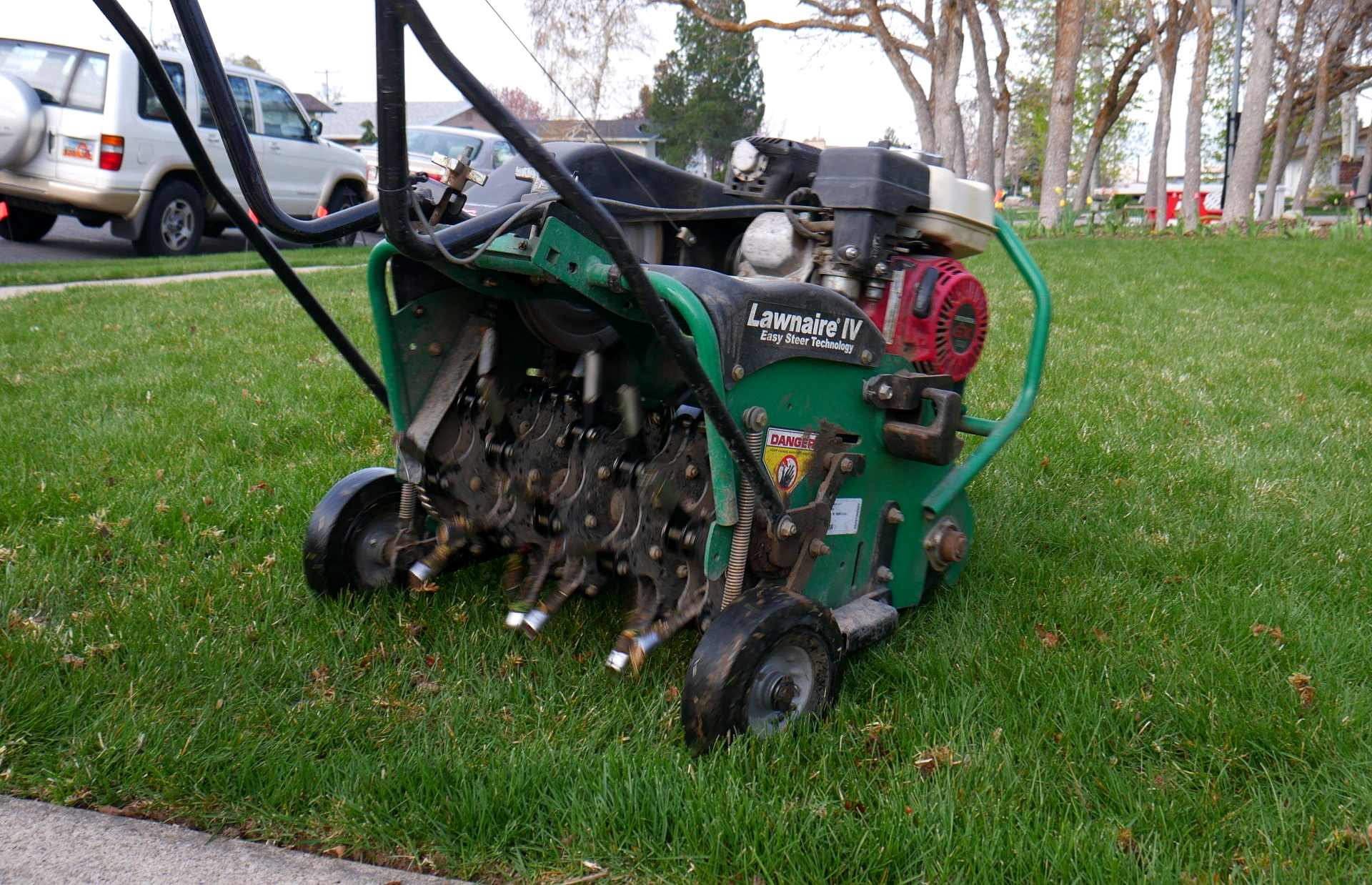Common Lawn Issues
Utah Lawns Can Have Problems, Too
Few things can be more disheartening that working hard to keep a healthy lawn and watching it turn brown! Luckily, there is a simple solution to most lawn ailments - if you know where to look.
Dry Grass
You'll first notice a little patch of drying grass that will continue to spread in unusual patterns. These spots typically won't show up until the hotter part of the season, if the watering is insufficient.
In the case of an issue with sprinklers, the dry spots will be local to certain sprinkler heads or specific sprinkler zones. When damaged sprinklers are the culprit, dry spots can show up anytime of the hot season, correlating to when the sprinklers started having issues.
The Fix:
The first thing to test is if the grass is getting any water. This is easy to do yourself, but don't hesitate to give us a call if you need any help at any point.
Turn on your sprinklers, one zone at time, and walk out to each sprinkler to make sure of a couple of things: that the sprinkler is indeed working and spraying an even spray, and that the sprinkler is spraying over the intended area.
If an issue is encountered during either of these tests, then repairs or adjustments must be made to the system. If all sprinklers are turning on and running like they are supposed to, then the issue could be watering times and/or frequency.
We have all the tools, parts, and knowledge to properly diagnose and fix any issues that you will experience with your sprinkler system.
Insects & Pests
Like most lawn issues, this one starts looking like dry grass. The clues that give away an insect or pest issue are: dry grass does not recover no matter how much you water, and upon inspection, the dry grass looks patchy and pockmarked. If the condition is advanced, grass patches can actually be pulled up because the root structure of the grass has been destroyed and nothing is anchoring the grass down into the dirt.
The Fix:
There is usually no quick fix for a pest or insect problem. There are many products that can be purchased at home-care stores that can work, but the challenge with eliminating pests is that you are fighting the entire life and reproduction cycle of the pest. What worked today may not be effective in the future.
It's often best to contact a pest control or lawn pest control expert. While we do apply grub treatments to lawns in the early part of the season, it is never a guarantee that they will stay away. This is where the expertise of pest control experts comes in.
Weeds
This one is easy to spot! ANYTHING that does not look like beautiful green grass, in the lawn, is a weed. There are a few common types of weeds that can plague Utah lawns. To learn more about these specific weeds, click HERE
Not only are weeds unsightly, but all weeds create competition for nutrients, space, and water with neighboring plants. The longer weeds are left alone, the more they will crowd out and suffocate your grass. They are bullies!
The Fix:
The key to eliminating weeds from your lawn is actually killing the weed or removing it, entirely, by the root. If you need the weeds gone now, then pulling the weeds, one at a time, by the root, is the only option. Keep in mind that this method does not guarantee that every single weed will be eliminated. There is always the chance that root material could be left behind, giving the weeds a fighting chance to bounce back.
If you aren't pressed on time, then a more thorough approach is available by using an herbicide. Many can be purchased at home-care stores and can be easily applied.
If you don't want to have to deal with it, we are fully equipped to eliminate weeds from your lawn. We will sometimes use a combination of methods in order to successfully treat weeds and to keep your lawn weed-free.
Disease and Fungus
This one is also easy to spot. The effected areas will usually be circular and in a random pattern. A clue that you are dealing with fungus is that no amount of watering will change the condition. In addition, the dry spots will not be pockmarked to signal a pest issue. Often times, the patches in the grass will be discolored an unnatural color.
The Fix:
There is a product we prefer to use that we have seen a lot of success with. The treatment is applied on a very specific schedule and the post treatment process must be followed exactly. Fungus issues are difficult to combat and it is important to be very patient and follow treatment instructions exactly.
Doggie Trouble
If you have a dog, you're probably familiar with these! And if you don't have a dog, and see these types of spots in your front yard, particularly along the sidewalk or driveway, you'll know what the culprit is. Both urine and droppings from dogs will not do your lawn any favors. Doggie droppings are especially harmful because of its chemical content and because it can stick around for a very long time if not cleaned up. Most dog foods have many synthetic ingredients and those ingredients end up in your lawn, eventually. These chemicals then upset the chemical balance in the soil and start killing your grass.
Dog urine is heavy in ammonia and nitrogen, which wreaks havoc on turf grass. You may have also heard that female dog urine is worse for grass than male dog urine. This is not true. All dog urine is created equal and will cause equal amounts of damage on your lawn
The Fix:
Clearing up doggie dropping is pretty straight forward. Handling doggie urine is another story. The aim is to neutralize the harmful chemicals so that the damage to the grass can be stopped.
Rinsing the effected area with clean water is the simplest solution. A baking soda mix can also help to neutralize the ammonia and nitrogen from urine.
Whatever the trouble you are having with your lawn, we can be part of the solution. If you are unsure about what issue you are dealing with, give us a call and we can visit your property to properly assess your needs and offer solutions.
